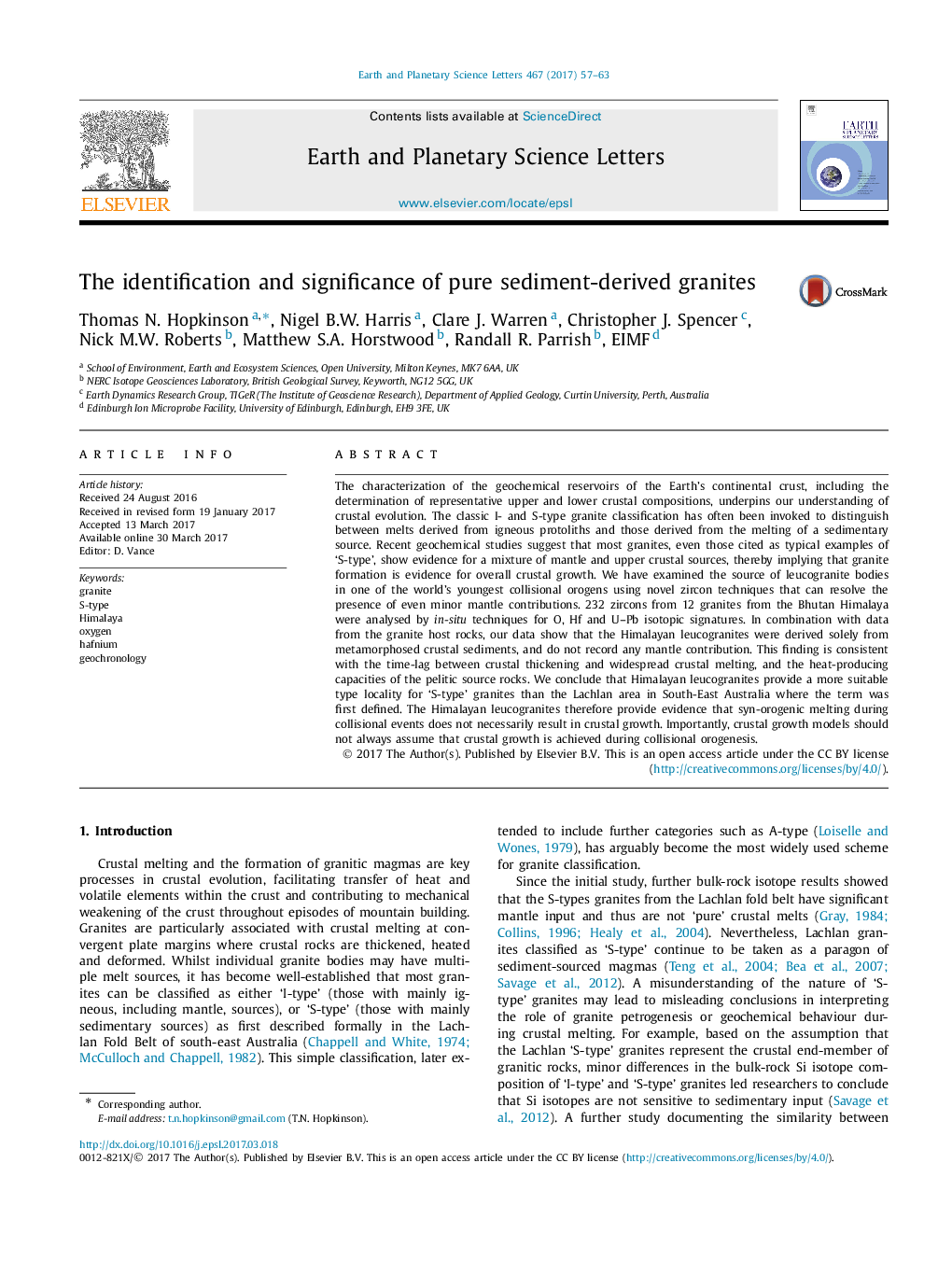| کد مقاله | کد نشریه | سال انتشار | مقاله انگلیسی | نسخه تمام متن |
|---|---|---|---|---|
| 5779938 | 1634689 | 2017 | 7 صفحه PDF | دانلود رایگان |
- Himalayan leucogranites are sourced entirely from sedimentary material.
- First evidence from Hf-O isotopes that some granites have 100% crustal source.
- Proof that granite genesis in major orogens need not contribute to crustal growth.
- The Himalaya provides a 'type-locality' for sediment sourced (S-type) granites.
The characterization of the geochemical reservoirs of the Earth's continental crust, including the determination of representative upper and lower crustal compositions, underpins our understanding of crustal evolution. The classic I- and S-type granite classification has often been invoked to distinguish between melts derived from igneous protoliths and those derived from the melting of a sedimentary source. Recent geochemical studies suggest that most granites, even those cited as typical examples of 'S-type', show evidence for a mixture of mantle and upper crustal sources, thereby implying that granite formation is evidence for overall crustal growth. We have examined the source of leucogranite bodies in one of the world's youngest collisional orogens using novel zircon techniques that can resolve the presence of even minor mantle contributions. 232 zircons from 12 granites from the Bhutan Himalaya were analysed by in-situ techniques for O, Hf and U-Pb isotopic signatures. In combination with data from the granite host rocks, our data show that the Himalayan leucogranites were derived solely from metamorphosed crustal sediments, and do not record any mantle contribution. This finding is consistent with the time-lag between crustal thickening and widespread crustal melting, and the heat-producing capacities of the pelitic source rocks. We conclude that Himalayan leucogranites provide a more suitable type locality for 'S-type' granites than the Lachlan area in South-East Australia where the term was first defined. The Himalayan leucogranites therefore provide evidence that syn-orogenic melting during collisional events does not necessarily result in crustal growth. Importantly, crustal growth models should not always assume that crustal growth is achieved during collisional orogenesis.
Journal: Earth and Planetary Science Letters - Volume 467, 1 June 2017, Pages 57-63
